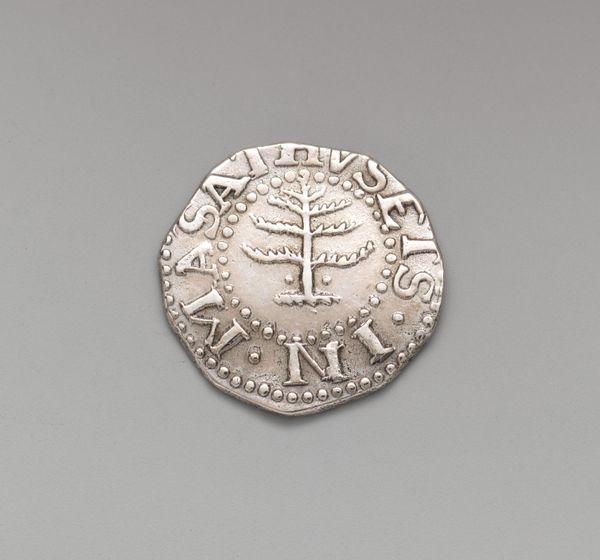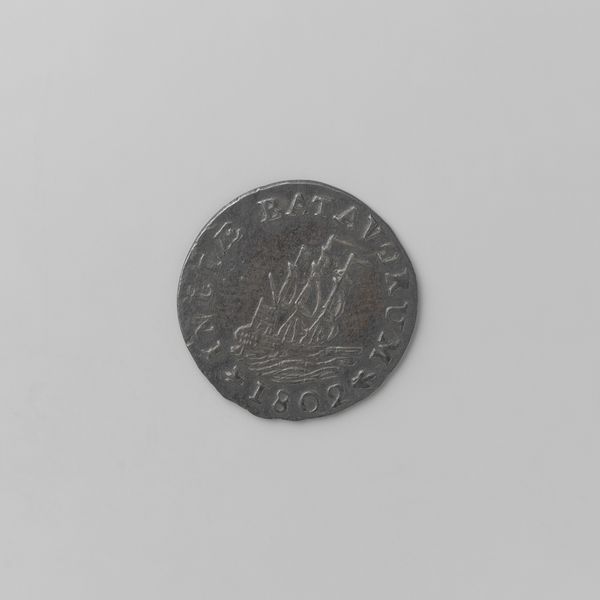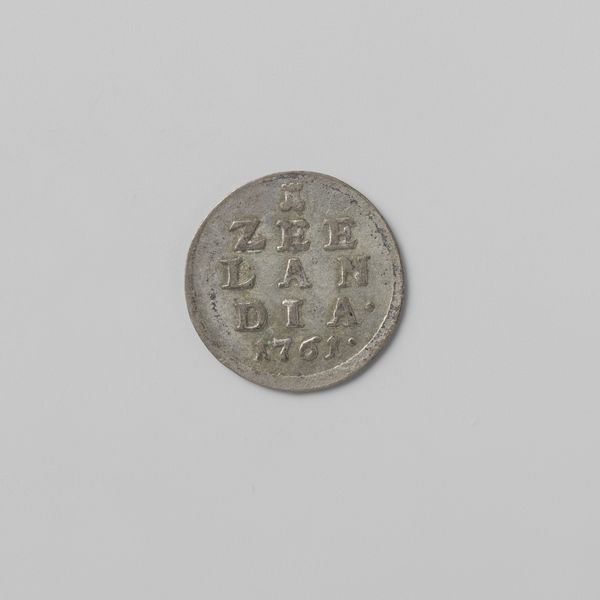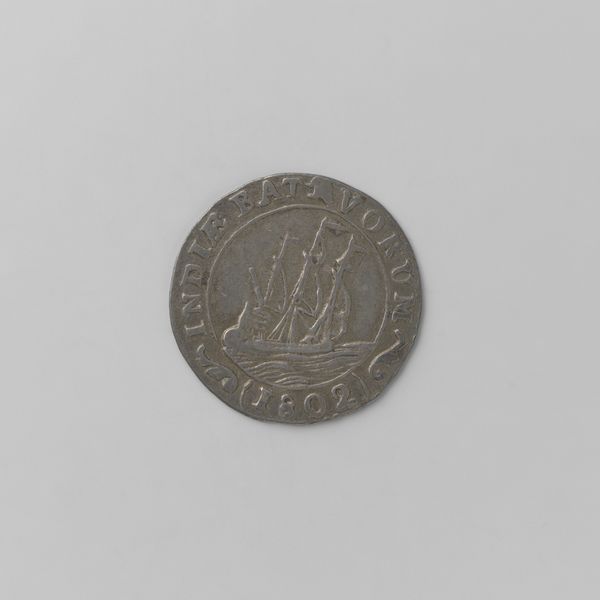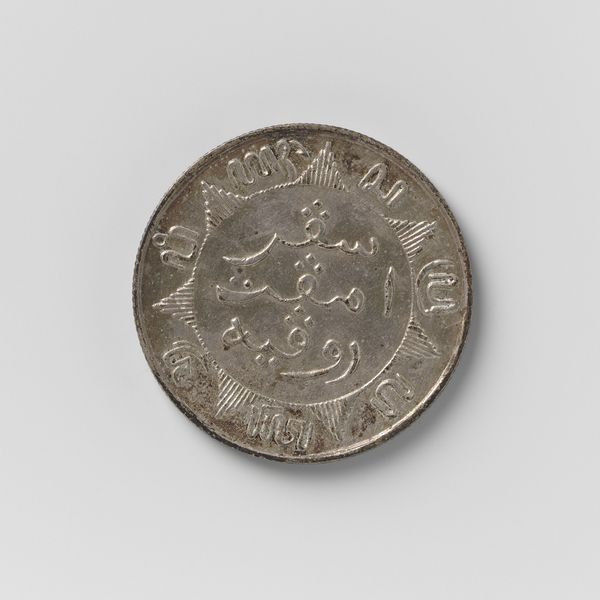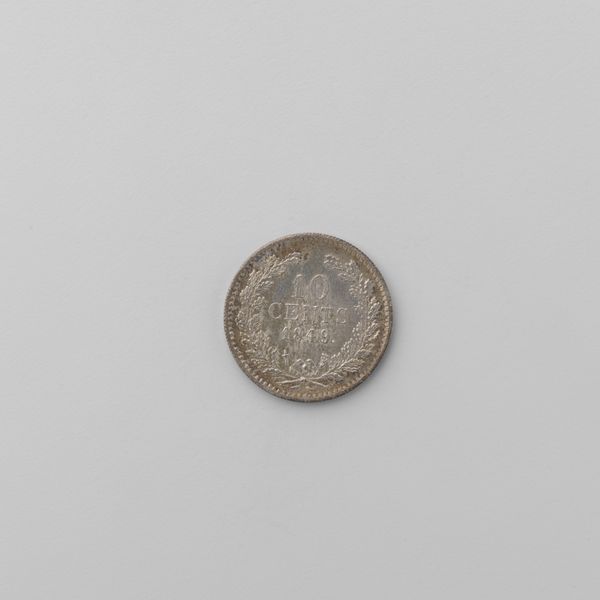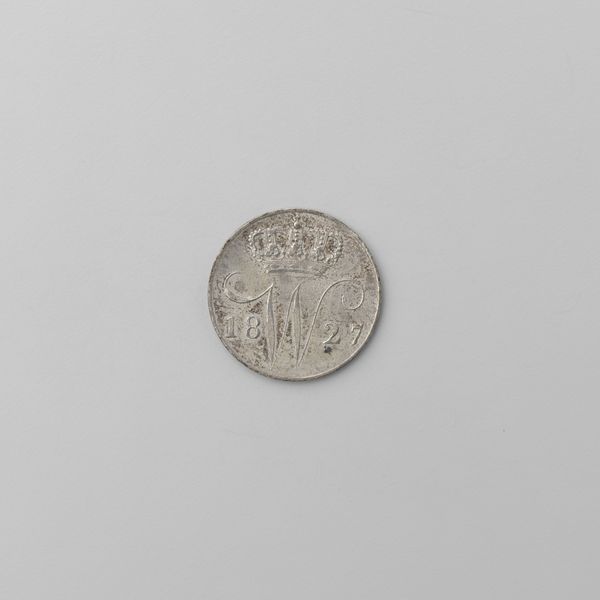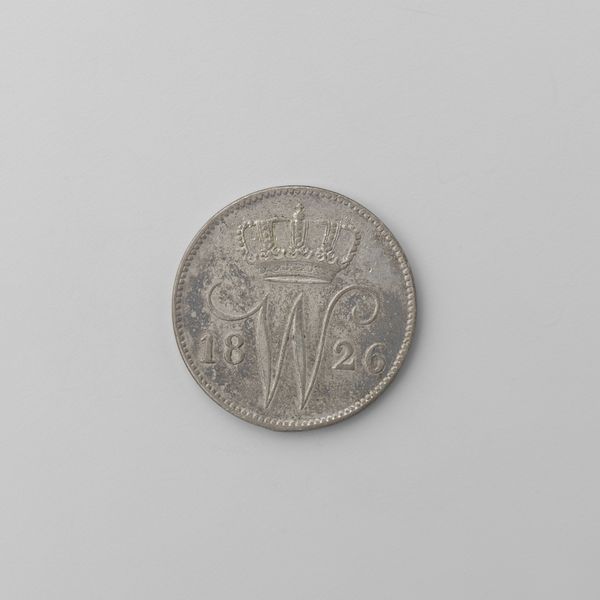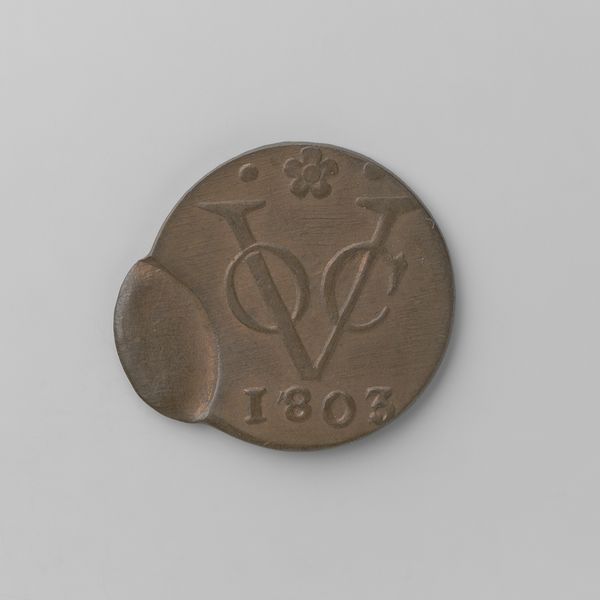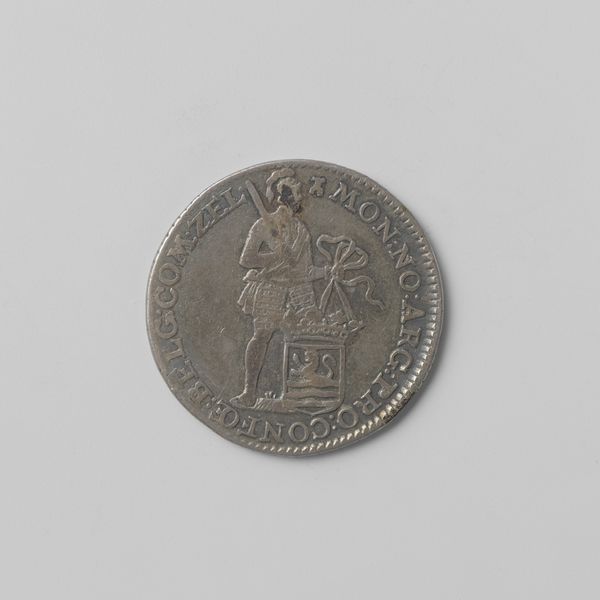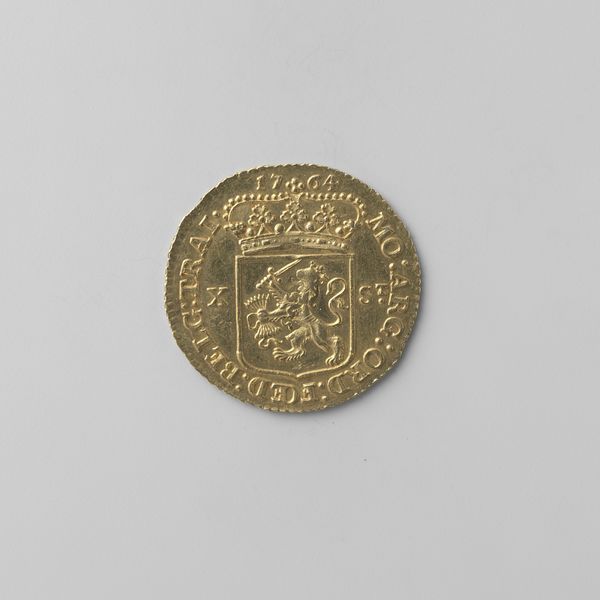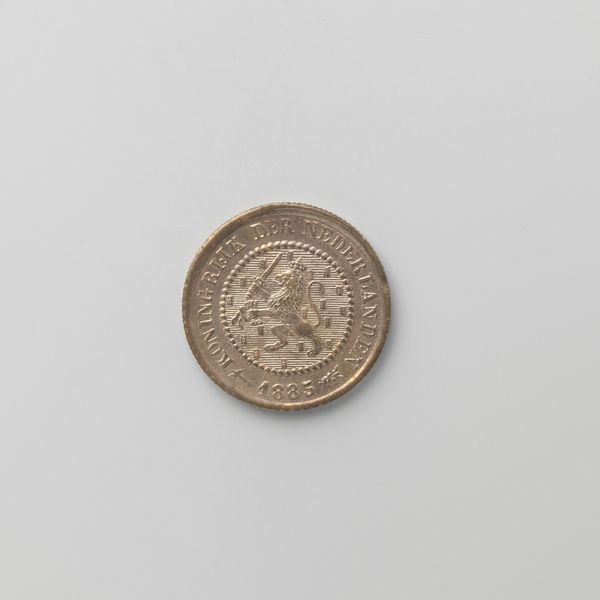
print, metal
#
portrait
# print
#
metal
#
ancient-mediterranean
#
decorative-art
Dimensions: 3/4 in., 2.5 Grams (1.9 cm, 1.608 dwt)
Copyright: Public Domain
Curator: Let's examine this fascinating piece, a silver sixpence dated sometime between 1662 and 1684. It’s attributed to John Hull, a notable figure in early American coinage, and it currently resides at the Metropolitan Museum of Art. Editor: It’s such an unassuming object at first glance, almost fragile. But it’s crafted of metal; it suggests permanence, resistance. I'm struck by the rudimentary rendering of the tree and the simple beaded border surrounding it. Curator: The “tree” you observe is not just any tree, it is often interpreted as a representation of the Massachusetts Bay Colony's aspirations for growth and self-sufficiency. It played a role in early economic transactions during a crucial phase of establishing colonial autonomy from Britain. These coins weren't simply currency; they represented a statement. Editor: That’s compelling. Knowing the context, that tree then signifies resistance, not merely nature. It brings into focus ideas around colonialism, sovereignty, and power dynamics. One almost has to reconsider who exactly decided upon, benefited from, or was potentially excluded from participating in these economic activities in early American society. Curator: Exactly. Moreover, this humble sixpence exists today as a symbol within our understanding of the transition into monetary independence and economic viability for emerging North American colonies in their fraught journey away from under the yoke of English currency regulations. It's really important to understand that it’s part of a larger economic ecosystem with far reaching impact beyond face value. Editor: It's intriguing how such a modest item embodies immense historical significance, raising significant points on the intertwined dynamics of political identity and economic strategy. One now might ponder all the individuals it went through; those involved from mine extraction of the materials up through today's modern institutional exhibit. Curator: Thinking about it as such really enhances its role beyond a financial object into a lens for the socio-economic considerations around colonialism at this crucial juncture for state formation itself. Editor: Indeed, reframing our view of this silver "Sixpence," helps reveal broader ideas concerning identity, empowerment, resistance against systemic power that echo powerfully throughout the passages of collective experience even still!
Comments
No comments
Be the first to comment and join the conversation on the ultimate creative platform.

